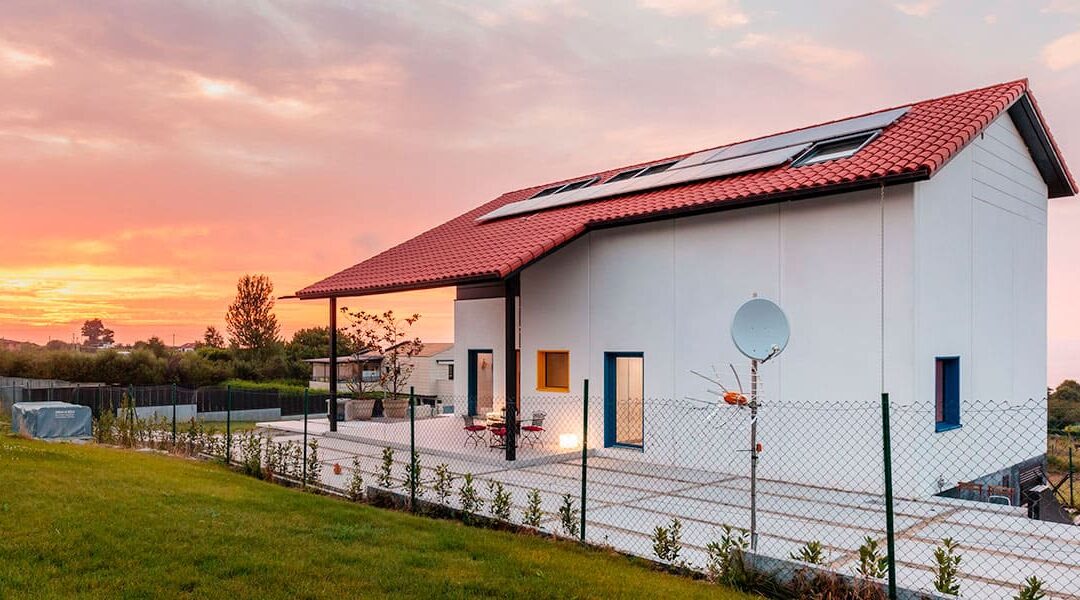Nowadays, sustainability has become a crucial issue in all areas of our lives, including construction. As we seek to reduce our environmental impact and build more consciously, it is important to consider the materials we use in our projects. Ceramic tiles stand out as a sustainable and environmentally friendly option in the world of construction.
In this article, we tell you how ceramic tile addresses the principles of sustainability and why it is a responsible choice. Ceramic tiles are made from clay, a natural, renewable and abundant resource on earth. Clay extraction is a sustainable process, since it is carried out in controlled and regulated quarries, minimizing the environmental impact. Furthermore, the clay used to make ceramic tiles is a renewable resource, as it can be extracted and used continuously without being depleted.
In terms of manufacturing, tile manufacturers have made a large investment to achieve a reduction in energy consumption and emissions, creating a more energy efficient production process and contributing to energy savings and the reduction of greenhouse gas emissions.
In relation to the energy efficiency of buildings, ventilated ceramic tile roofs have high thermal inertia and contribute to the thermal insulation of the building envelope. For this reason, they are optimal construction solutions for the design of Almost Zero Consumption Energy Buildings (EECN) and their use has been common for a long time in works that comply with the most demanding environmental standards, such as Passivhaus or the BREEAM, LEED and GREEN seals. .
Ceramic roofs give rise to enclosures with an excellent level of protection against meteorological phenomena such as wind, rain, or snow. Its robustness and tightness guarantee the comfort and safety of users in adverse weather conditions.
Ceramic tile roofs minimize noise due to the impact of rain and avoid noise due to contractions and expansions that are generated in other types of roofs.
They also have excellent behavior against humidity, since, on the one hand, their porosity allows them to absorb moisture from the air when the relative humidity is high and release it when the indoor air becomes drier, and on the other hand, the presence of water does not alter its properties.
Furthermore, they do not emit volatile organic compounds (VOCs), radon gas, or other toxic substances into the atmosphere inside the building. Therefore, they are the perfect product for your home to enjoy healthy indoor air quality.
If there is one characteristic of ceramic materials that stands out above all, it is their great durability. A building built with tile roofs has a useful life that exceeds 150 years with little maintenance, a figure much higher than that of other construction products. This long useful life translates into financial savings for home owners in terms of renovation and/or maintenance.
Despite the long life of buildings constructed from ceramic products, sometimes such buildings are demolished before the end of their useful life. When this occurs, exposed ceramic products, such as facing brick, tile and paver, can be recovered and reused.
The European Waste List (LER) classifies ceramic construction and demolition waste as inert and non-hazardous, so they are highly recyclable, in different uses such as: filling and stabilization material for roads, aggregates for concrete and mortars, soil beaten on tennis courts, plant substrate or covering element for agriculture.
As ceramic products are inert and do not alter the quality of the water, they allow the use of rainwater. Thus, drainage systems can be used on tile roofs to collect and store it for later use.
In conclusion, ceramic tile stands out as a sustainable and environmentally friendly option in construction. Its manufacture from clay, a renewable resource, together with its low energy consumption, durability, ability to promote energy efficiency and recyclability, make it an environmentally responsible choice. By opting for ceramic tiles in our construction projects, we are contributing to sustainability and building a more environmentally conscious future.
““The Roof, of Texas”
The Guild of Rajolers of the Valencian Community continues to develop together with Hispalyt the bell “The Roof, Texas”, in which it claims the benefits and advantages of this material for the construction and rehabilitation of roofs, contributing to the reduction of energy consumption, the increase in comfort and safety and multiplying the design possibilities for any building or home.

